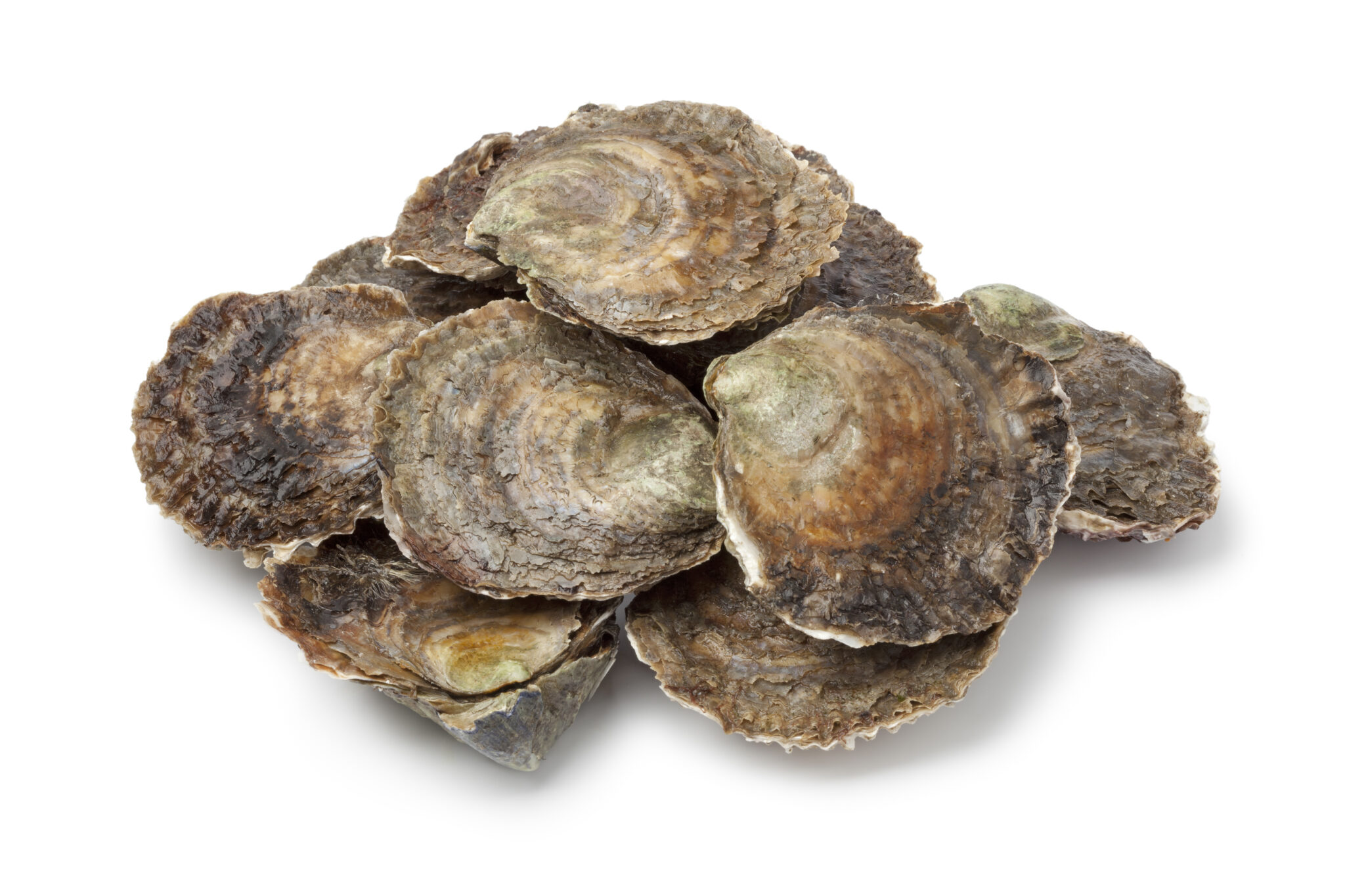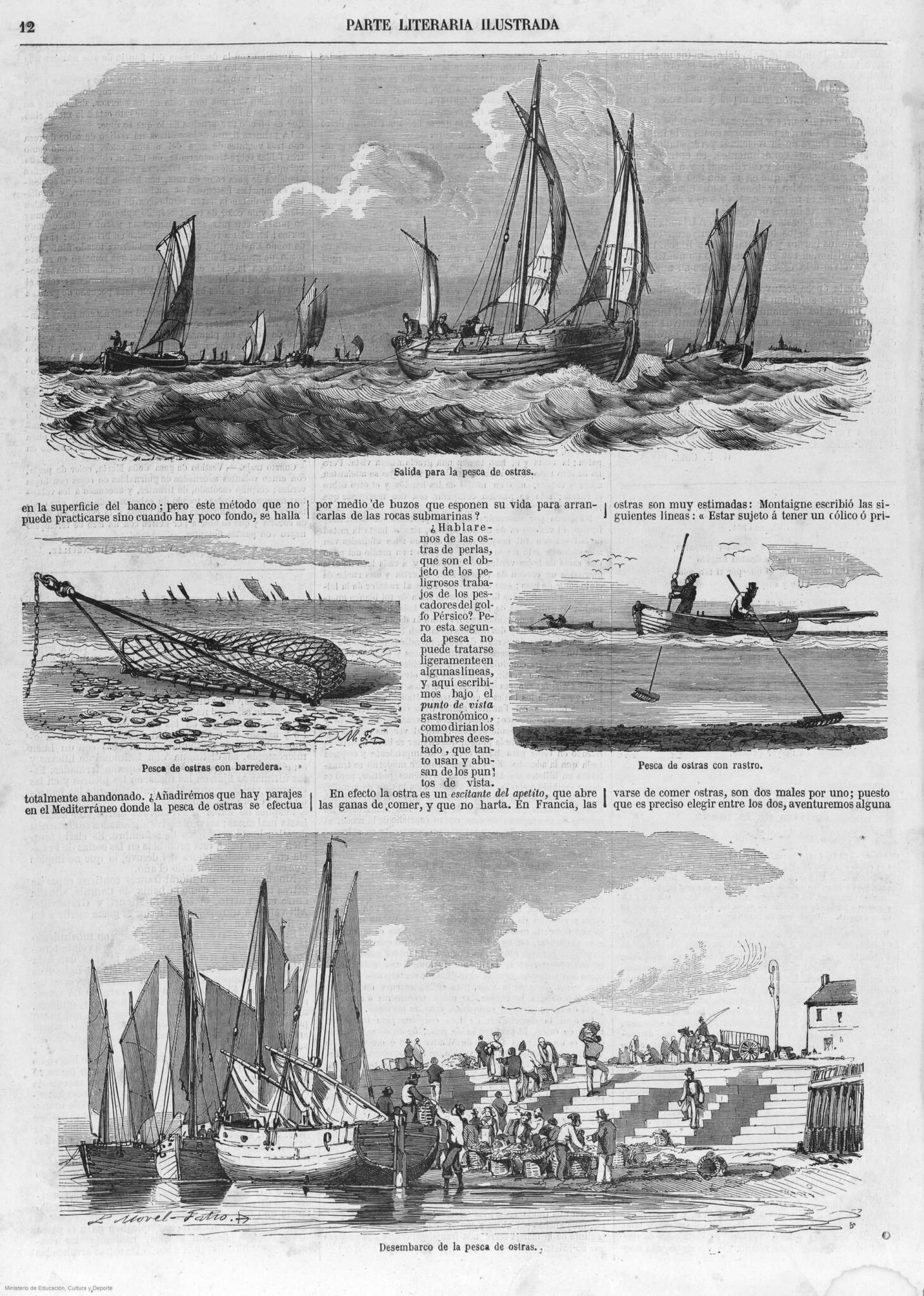IHCantabria contributed to the development of an important study on the disappearance of flat oyster reefs in Europe

Image of fresh European flat oysters
Their results provide a solid basis for actions to restore oyster habitats and improve the health of coastal ecosystems in the context of nature-based solutions, which is a key focus of the LIFE AdaptaBlues project
The results of a study, recently published in the scientific journal Nature Sustainability, offer a detailed view of the ecological importance of European flat oyster reefs(Ostrea edulis), now functionally extinct, but in the past came to cover more than 1.7 million hectares in Europe. This study, led by researchers from the University of Exeter and the University of Edinburgh, and in which researchers from the Environmental Hydraulics Institute of Cantabria (IHCantabria), Bárbara Ondiviela and José A. Juanes, have participated, has had a team of more than 30 European researchers from the Native Oyster Restoration Alliance.
The paper, entitled “Records reveal the vast historical extent of European oyster reef ecosystems“, compiles historical information from more than 1,600 records dating from the 18th, 19th and 20th centuries, providing a detailed picture of how European flat oyster reefs came to form extensive habitats along European coasts. The results presented in the paper are probably one of the first overviews of the spatial distribution of a European marine ecosystem before its widespread functional extinction.
A lost ecosystem
According to the research, oyster reefs were a dominant feature of European coasts, providing shelter for nearly 200 species of fish and crustaceans, and playing a vital role in shoreline stabilization, nutrient cycling and water filtration. An adult oyster could filter up to 200 liters of water per day, contributing significantly to water quality and the health of the marine ecosystem.
However, these complex ecosystems were disappearing mainly due to overfishing and other human activities in the early 20th century, resulting in a fundamental “reorganization” of the seafloor and loss of biodiversity. Today, European flat oysters survive as isolated individuals, and the vast three-dimensional reefs that once covered coasts from Norway to the Mediterranean are a distant memory.
A call for restoration
The study underscores the need to expand oyster reef restoration efforts across Europe. Projects such as the Wild Oyster Project are important steps, but the researchers stress that government and policymaker support is needed to bring these initiatives to an international scale.
The participation of IHCantabria, through Bárbara Ondiviela and José A. Juanes, was key to documenting the historical ecology and understanding the loss of native oysters on the Atlantic coast of the Iberian Peninsula. Through the review and consultation of scientific and grey literature, historical archives and local agents, both scientists inventoried the places where this species was historically present, contributing to the analysis of the spatial extent of these ecosystems.
“This study provides a unique quantitative reference on the magnitude that oyster reefs had in the past in Europe,” says Bárbara Ondiviela. “It is an urgent call to intensify efforts to restore these ecosystems, which are vital not only for marine biodiversity, but also as an economic resource for numerous coastal communities,” adds the researcher from the Coastal Ecosystems Group of IHCantabria, who highlights the important contribution made in this study by the knowledge generated in the European project LIFE AdaptaBlues.
For his part, José A. Juanes, head of the Hydrobiology and Environmental Management Area of IHCantabria, added: “Knowledge of the past is essential to plan for the future. This study allows us to visualize the real impact of our actions on marine ecosystems and gives us the tools to reverse the damage”.
Future projections
The article, funded in part by the European Research Council, provides fundamental information for the development of marine restoration policies in Europe. Its results provide a solid basis for actions to restore oyster habitats and improve the health of coastal ecosystems in the context of nature-based solutions, as promoted by the LIFE AdaptaBlues project.
The complete contents of the study can be consulted through the following link: https://www.nature.com/articles/s41893-024-01441-4


Information and images published in the 19th century by the newspaper “El Correo de Ultramar”: Parte literaria e ilustrada reunidas: Tomo V Año 14 Número 105 – 1855. Taken from: https://prensahistorica.mcu.es/es/catalogo_imagenes/grupo.do?path=1000227560&posicion=13&presentacion=pagina®istrardownload=0


LIFE AdaptaBlues is a project of the LIFE Program, with reference LIFE18 CCA/ES/001160, financed by the European Commission and managed through the CINEA Agency. European Commission and managed through the CINEA Agency.



